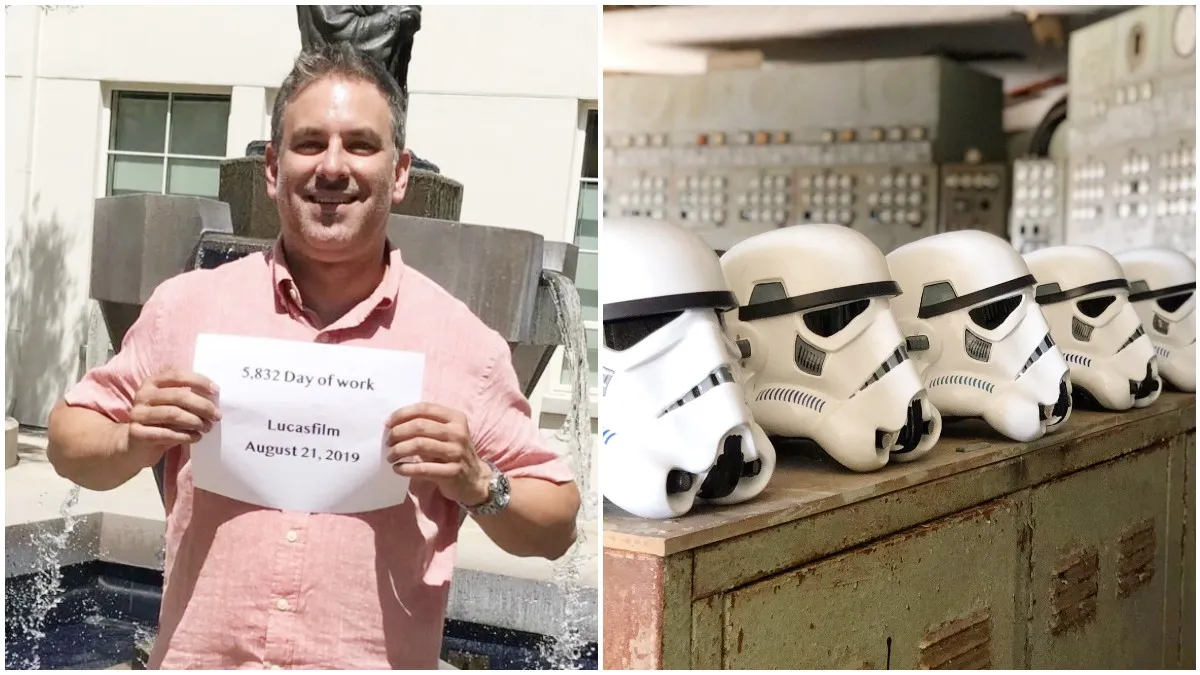After what felt like hours, I finally made it to Silo 7. You see, there were a few psychotic, cultist monks that wanted my group to travel far north in the desert wastes of Arizona to find, and ultimately transport, a nuclear missile. This particular brand of monks worshiped a nuclear bomb as their false God, which they referred to as Titan, and they wanted my band of wastelanders to find them another Titan for the simple mathematical leverage of having two nuclear bombs. Pretty altruistic, huh?
So, after loading up on ammo and skepticism, I battled my way through the particularly violent northern wastes and traveled to Silo 7, the supposed site of their sleeping Titan. There, I met another monk. This monk, however, wanted me to deactivate the bomb because he feared what will become of it in the wrong hands (uh… duh?). He also told me that if I don’t deactivate the bomb, then we will have to kill him since he would rather be dead then live in a world where the threat of nuclear destruction continues to loom. I had a choice: Deactivate the bomb or send the bomb as is to my quest-giving monks. On my first save, I sent the bomb as is and killed the monk. When I returned to the cult, the idiot monks detonated the bomb and completely decimated their society. On my second save, I deactivated the bomb, spared the monk, but when I returned, the cultist monks had grown wise to their false, nuclear God and proceeded to kill all who lied to them, including the man who gave me the quest.
Thus, I give you inXile Entertainment’s Wasteland 2.

Forgive the lengthy introduction, but it is the only way to illustrate what makes Wasteland 2 so, so special. This post-apocalyptic version of Arizona is an ugly place. That probably seems obvious given the gloom “post-apocalypse” typically denotes, but the profound cruelty that is sewn into the world and writing is what makes this game unique. There are no easy decisions. Every choice I made hurt at least one person and rarely played out the way I intended. In the first few hours, I was tasked with either saving an agricultural center that provides most of the valley’s food, or a moderate city-center that protects a massive water source. Whichever I picked, I would not be able to save the other, and it would be a massive blow on the dwindling population regardless. It’s decisions like these that elevate the writing and moment-to-moment gameplay from a simple video game to memorable, which is especially impressive given the tepid approach games often take when attempting to say something of emotional or political resonance.
inXile’s grim, post-apocalyptic RPG takes place in 2102, roughly 100 years after the Soviet Union and USA bombed themselves into oblivion. After the fallout, the typical post-apocalyptic events transpired: factions formed, the desperate either perished to or became a raider, and violence ensued. Your characters are new recruits for the Desert Rangers, a band of survivalists that bring law and order to the deserts of Arizona. The leader of the Desert Rangers, General Vargas, dispatches your team to avenge a fallen comrade and investigate the mysterious signal he was responding to when he died.
Before you set out, though, you need to create your band of Rangers, which is where the beautiful, stat-driven CRPG elements begin. True to the genre’s form, Wasteland 2 is dense, and for those interested, you will be pleased to know the character creation options are loaded with customization. Everything from name, age, class, ethnicity, stats, and character bio is available for customization. Each character will have their own personality and use on and off the battlefield, so much so that it’s genuinely difficult not to become attached to each member. Not to mention that if a character dies, they are dead forever, so there is an underlying “no one left behind” sentiment that compelled me to keep my virtual children safe, another small way the writing and design gets to shine. If you want, and don’t feel like spending the time creating your team, you can pick a default squad complete with stats already assigned, classes, and character backgrounds. It’s less fun, but it ensures your team is well-balanced, which is crucial for survival.

Once you start getting into fights, you will quickly determine the glaring holes in your team. Combat is slow, tactical, and tough as hell. I was playing on the default difficulty and still found it demanding. If you have too many characters outfitted for assault rifles and not enough melee or small arms, have fun fighting close combat enemies. Oh, you have a team of heavily armed bruisers and one field medic? Good luck when that medic gets knocked out by a lucky critical hit. Too many similarly classed characters, or conversely not enough of a class, can be the start of your downfall. But character builds are just a part of a multi-layered whole.
Fights can go smoothly, with your entire team coming out without a scratch, or they can go real bad. As a surprise to absolutely no one familiar with CRPGs, strategy matters. If you make it through a fight using poor positioning or decision making, you’re either lucky or over-leveled. Wasteland 2 gives you just as much respect as you give it, and will not go out of its way to help you. In order to be successful, I had to pay close attention to the movements my characters were allowed, changing positions based off types of enemies, and deciding when it was best to take the calculated shot rather than rush. When things go well, it feels great as you watch your plan come together, and when things go bad, you always know it’s because of something you did… mostly. Unfortunately, combat, and movement in general, is where the faults begin to show — not because of the game, but because of its performance.
I don’t know how to else to put this, so I will just say it: Wasteland 2‘s performance on Switch flat out sucks. To be fair, being able to play a game like this on the go is incredible, and another piece of evidence showing that we should port absolutely everything to the Switch. That’s where the good stops.

I don’t think I went five minutes without the game stuttering. Many times, after an encounter, my characters would slowly ice skate over the ground as the game caught up to speed. During combat, the game would hitch as I was moving the cursor around the screen and I would accidentally choose an option I didn’t want, which, if you were paying attention, can mean death. Whenever there was an explosion, I would send up a little prayer to the technology gods in hopes that the game wouldn’t crash. Speaking of which, at last count, my game hard-crashed eight times. Playing a CRPG with a controller already feels unnatural, but when you pile on the sheer volume of performance issues, it’s downright untenable. Strategy games need precision. Not precision in character movement or twitch mechanics, but cursor precision. When it takes me several tries to get my cursor on the right tile because of lag, not only does it drop the immersion, but it chips away at my strategic advantage.
Witnessing the technological failings of this game has been infuriating because the rest of it, the actual meat of Wasteland 2, is incredible. It may not have big budget visuals, set pieces, or voice overs, but the world and writing is far more fleshed out than most AAA titles. These are the types of games that reward patient players that take the time to speak to everyone and explore everything. As opposed to many open-world games, not one quest was fluff. While there were some traditional fetch quests, they never felt like busy work and would always grow into something bigger.
When I set foot in Ranger Citadel, the Desert Ranger’s headquarters and fortress, I was hurting pretty bad, so I looked for a doctor. When I found him, I quickly scrolled through the text, picked the option for healing, and went on my way. Sometime later, probably ten or more hours, I returned to the doctor and decided to explore the extra dialogue options. To my surprise, the doctor was sick. He had cancer. Since I decided to ask him more questions, I was given additional choices and found out that he heard rumors of a cure for cancer in the far, unexplored north of the wasteland. And just like that, I was on my way to a quest I would have never seen if I didn’t take the time to speak with that character.

Quests and character moments feel natural within the world because the writing always provides the space and reasoning for them to exist, not to mention unpredictable (just like life!). To take a cue from our own David Morgan’s Divinity 2 review, Wasteland 2 similarly follows improv’s “yes, and” rule. Characters don’t simply send you out — they will let you know where something is, and on your way there, you might find another character who needs help more, but if you help them, then the quest-giver could refuse to give you your reward because you took too long or, well, because they are dead. As I mentioned above, no decision is black and white. Every quest, choice, character development has weight — they all have something to lose and gain (again, just like life!).
If it weren’t for the performance issues, I would be damn near evangelical with my enthusiasm for Wasteland 2. The world building and writing are excellent and a testament to naysayers who believe video games cannot tell a good story. I can’t pretend to speak to what goes into porting games to different consoles, but I truly hope inXile can produce a patch to make performance smoother. If not, new and existing gamers who own a Switch and have not gotten a chance to play it may bounce right off, missing out on a terrific video game.
This review is based on the Nintendo Switch version of the game. A copy was provided by inXile Entertainment.






